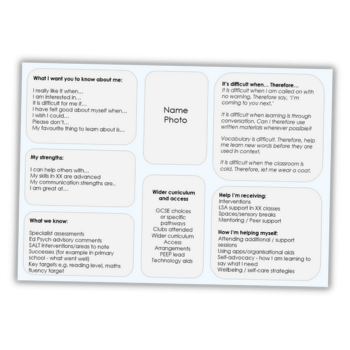Pre-made teaching resources and lesson activities – A shared blessing or collective curse?

Bhamika Bhudia weighs up the pros and cons that come with having near infinite teaching resources just a mouse-click away…

- by Bhamika Bhudia
- Head of English and writer of bilingual children's books Visit website

Managing one’s workload is among the most challenging tasks in education, and often cited as a major factor in the profession’s ongoing retention crisis.
In many ways, though, we now live in an era of accessibility. Long gone are the days when every lesson had to be specifically planned by individual teachers – but has addressing that issue caused us to exacerbate others?
Allocated time-fillers
Sharing lessons and resources via departmental hard drives, the kindness of internet strangers, social media exchanges and even buying and selling them, results in many benefits.
Teaching is a demanding job, so sharing our resources is surely a smart way of managing time. Sharing resources also allows teachers to introduce new, more imaginative approaches to their classrooms, thus avoiding the same old repeat lessons with the usual activities year after year.
At its best, collaboration can encourage a blend of teaching styles, and help rejuvenate curricula and individual practice. But if not carefully considered, ready-to-go lessons and activities can cause problems of their own.
Pre-prepared curricula – particularly at KS3 – can often end up as allocated time-fillers, which you’ll reach the end of without having achieved any real purpose, or made any progress beyond what the slides, worksheets or notes will have told you to do.
Greater emphasis can end up being placed on just getting through the scheme of learning, rather than on the skills students will need at the end of the relevant unit, year or Key Stage. It’s easy to lose sight of why students are learning what they are, what they will be assessed on and what they need to know now, in order to succeed or excel in subsequent lessons.
De-skilling teachers
In a similar way, adding one-off lessons or activities into a unit because the content or approach seems interesting can be an engaging thing to do – but it can also cause you to veer off into directions that neither build on prior learning, nor provide any other platforms from which to grow future learning.
True learning and progress doesn’t happen in short time frames; it involves students making connections between what they know and will need to know in future. Not everything has to fit into a grand scheme, but frequent disjointed learning will inevitably hinder long-term progression.
Relying on everything being pre-prepared can also effectively deskill teachers, particularly those in the earlier stages of their careers. The ability to sequence activities and lessons, while building and progressing skills in students over time, requires considerable practice and refinement. As such, building lesson materials from scratch can be a valuable experience for any teacher.
Assess and adapt
When using shared resources, it’s important to try and understand how the learning is taking place. What’s the rationale? What content and skills are being taught and why? How does the resource fit in with the bigger picture? This isn’t a straightforward task, however. The resource will ultimately be based on someone else’s logic and thought processes, which will then feed into any lessons where the resource is used.
Adaptation is therefore key. There’s no point driving to the end of a unit if all the necessary skills have been left lying at the roadside. Where do your students need more support? What did they struggle with and where did they excel? What do you need to go back over?
It’s important not to rush through, particularly if the work isn’t being done and students’ understanding is insufficiently secure. Instead, use the opportunity to sharpen your own planning, both in the long and short term. Assess the effectiveness of other resources, then put that knowledge into your own lesson construction and sequencing.
Collaboration will always be hugely powerful, but as with so many tools in our field, we need to examine why the products of collaboration are designed the way are, and figure out a way of making them our own.
Bhamika Bhudia is a teacher of English and lead teacher in a mixed comprehensive secondary school in London. Follow her on Twitter at @MissMika_Eng.







